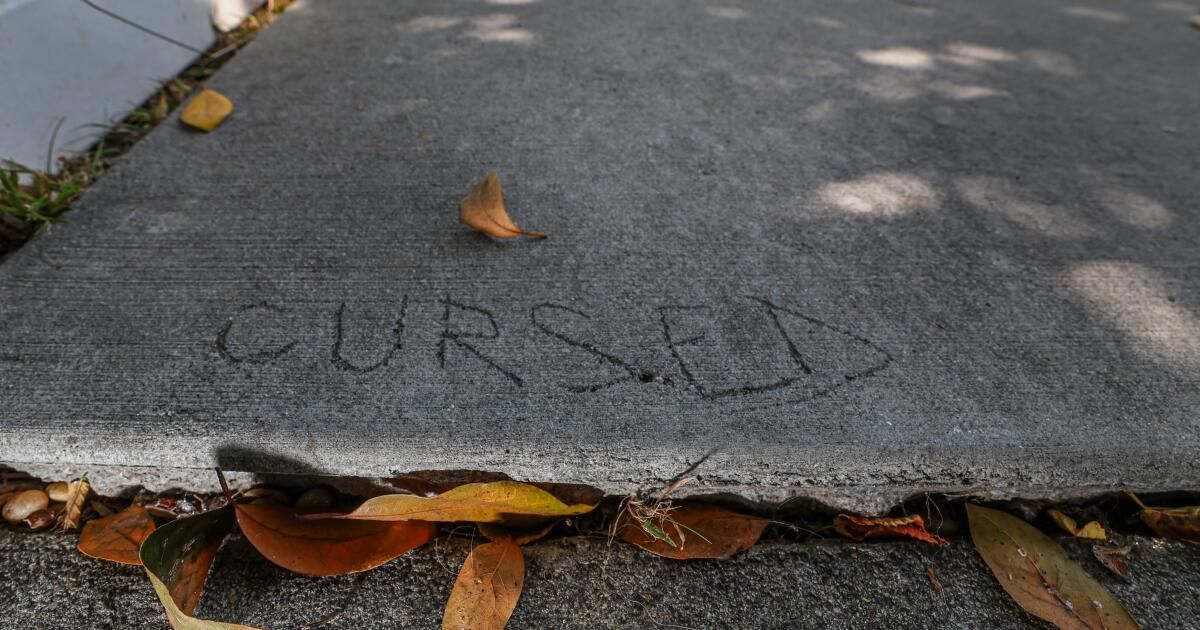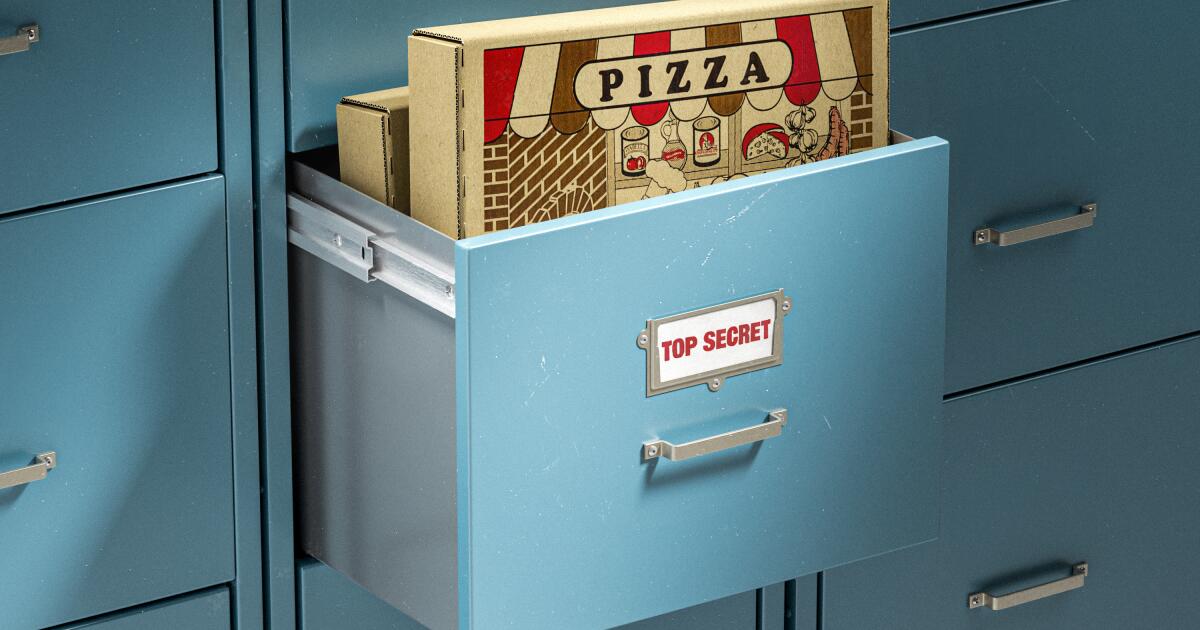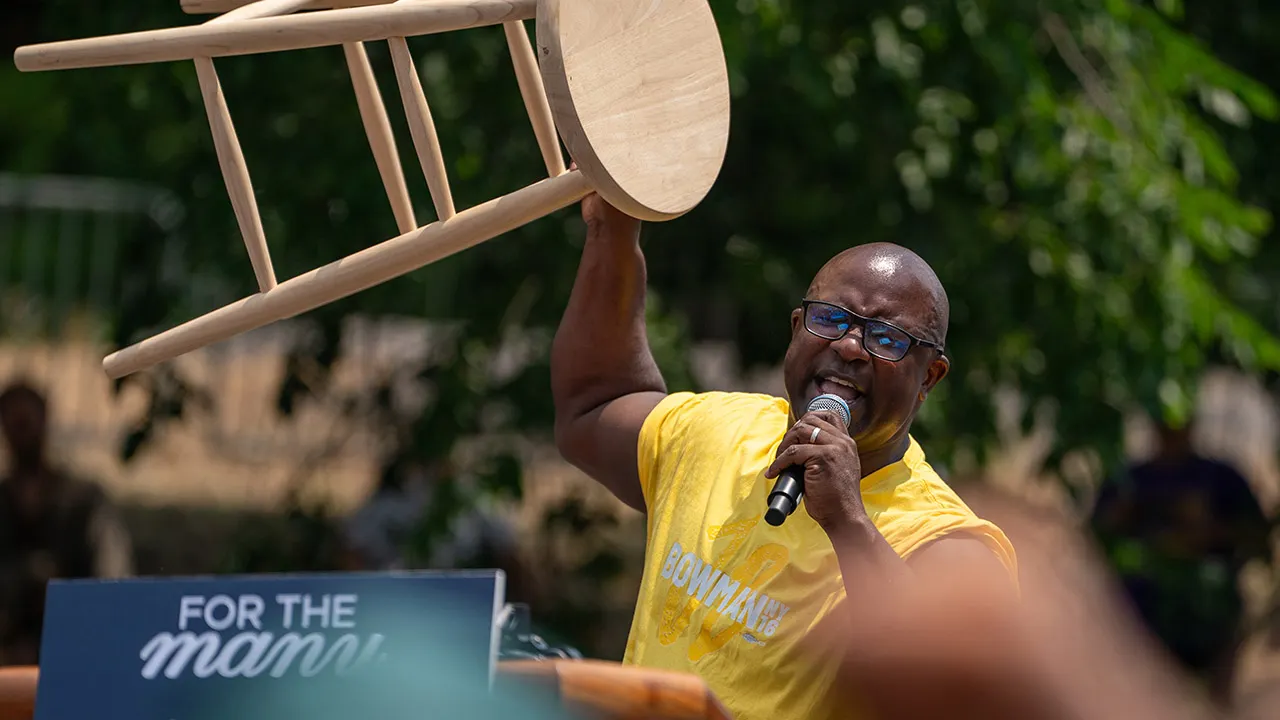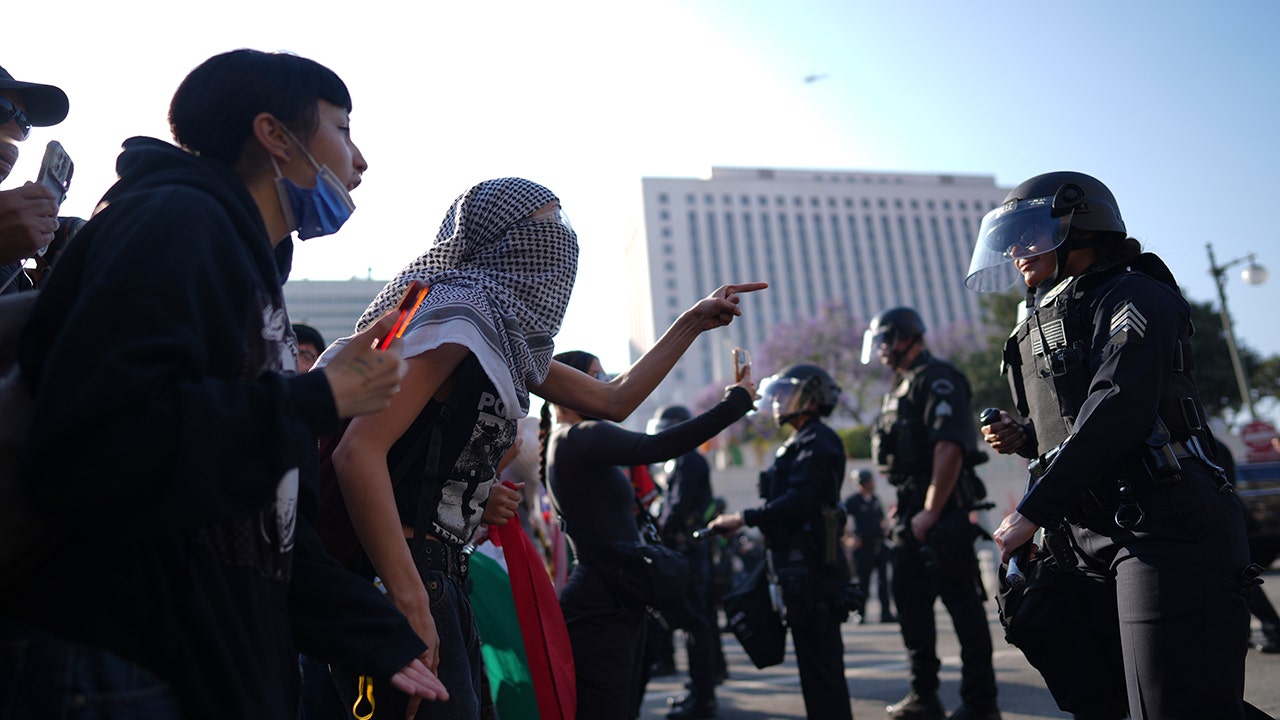It took me a few weeks of research, but I think I finally have some answers on what to do if you live in the city of Los Angeles and would like to have sidewalks that don't look like obstacle courses.
Your first and best option is to pack up, sell your house, and move out of town. Literally tens of thousands of sidewalks have been torn up and cratered over decades, so it's time to give up. The surrounding communities do a much better job of the basics.
The next best thing is to stay put and get a donkey. These sturdy, loyal animals could withstand most of the jagged peaks and twisting tree roots that define Los Angeles, and if they fall, you can sue the city like thousands of others have and retire early.
California is about to be hit by a wave of aging, and Steve Lopez is taking advantage of it. His column focuses on the advantages and disadvantages of advancing age, and how some people are challenging the stigma associated with older adults.
If none of this appeals to you and you prefer to request a repair through the existing sidewalk repair system, I have some breaking news for you:
There is no system.
Sure, you can go to the city's MyLA311 service portal and begin the process of requesting help, but the other day, in a conversation with Mayor Karen Bass, she acknowledged that the 311 system is a mess.
You can try the city's Safe Sidewalks LA website and you will find that there is an efficient program in place for you to fix your own sidewalk and get reimbursed, or to get a quick repair paid for by the city if the request is from or for people with disabilities.
Don't be fooled.
Do you know why there is so much hype about getting Los Angeles ready for the 2028 Summer Olympics? Given the backlog in sidewalk repairs and the current pace of repairs, the sidewalks will not be fixed in time for the 2038 Summer Olympics in the City of Angels.
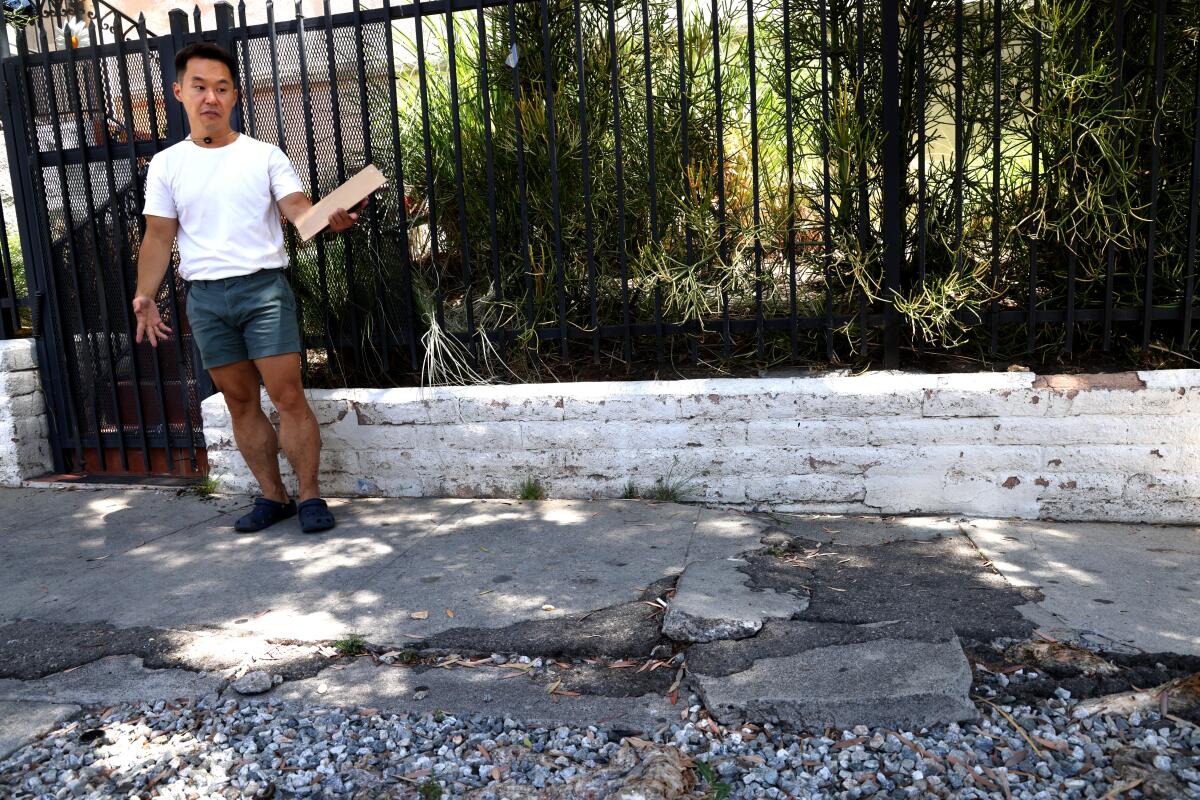
John Yi, former executive director of the nonprofit pedestrian advocacy group Los Angeles Walks, looks at a damaged sidewalk along South Manhattan Place in his Koreatown neighborhood.
(Genaro Molina / Los Angeles Times)
Property owners have good reason to feel irritated and confused, because the city has been sending mixed signals for years. In 2016, city officials launched the “repair and release” program, which said it would repair all sidewalks and then pass responsibility for future maintenance on to the property owner.
You didn't fall into the trap, did you?
When Daffodil Tyminski of Venice contacted the city a month ago, hoping to finally get help with damaged sidewalks after 20 years of failed attempts, she was told that repairs are the property owner's responsibility. And she wasn't the only one who read my last column about sidewalks and wondered what would happen with repairs and release.
I made a sincere effort to find out, but I fell right into the trap. Can I sue the city for this?
An August 30, 2023 summary by the city’s Bureau of Engineering noted that the repair and release plan was never fully “executed” and failed. The report recommended a “repair without release” plan that I couldn’t fully understand and asked for input from multiple city departments, which is always the kiss of death in Los Angeles.
I sent some questions to the city's administrative officer, who told me more than once over a week of emails that he was about to respond, but never did. He suggested I try the Department of Public Works, and that was another week of back-and-forth. It's not like he was asking leading questions, either. Just the usual “what's up?” questions.
Eventually, I received an email from a spokesperson who said their work is funded by the Department of Sanitation, but assigned to the Department of Public Works, which gives an idea of the depths of the rabbit holes.
“Overall, the policy regarding sidewalk repairs is being evaluated to ensure Angelenos receive the best possible service in the most efficient manner,” he wrote to me.
Well, that clears things up, doesn't it?
He also seemed to be suggesting that the property owner is generally responsible for repairs, but I find it hard to be sure, because I'm not even sure city officials, including the mayor, are sure.
Bass told me he told the head of the city’s Department of Disability that he wants deputy mayors and other department heads to get together and “figure out how we fix the most extreme sections” of dilapidated sidewalks as quickly as possible.

Dennis Hathaway and his wife, Laura Silagi, walk past a badly damaged section of sidewalk near their home in Venice.
(Robert Gauthier/Los Angeles Times)
“I cited Sepulveda and La Brea (it’s actually all over the city) and asked for a map and a list of sidewalks that are not walkable,” Bass told me. “Some of the sidewalks on La Brea are in such bad shape that you would almost have to walk through traffic, but you can’t.”
I like honesty, but not the game plan.
Do we really need a map, a list, or another meeting?
Dilapidated sidewalks, most of them destroyed by trees that the city has never and will never properly maintain, have been a fixture in Los Angeles for decades. We know where they are.
So here's my suggestion:
The mayor travels around town a lot, doesn't she? Every time she sees a sidewalk that's impassable, she should call the head of Public Works and the councilman who represents that district and tell them to fix the sidewalk before the end of the week, even if they have to do it themselves.
Nothing will ever change unless someone takes control here.
Donald Shoup, a professor at UCLA, told me he thinks the city should borrow a lot of money, hire contractors to fix the sidewalks in time for the Olympics, and have property owners reimburse the city when they sell.
That works in theory, but it would take the city two years to identify interested parties and two more to conduct a feasibility study.
“It’s an organized neglect,” said Jessica Meaney of the nonprofit Investing in Place, which advocates for sensible planning and budgeting to improve infrastructure and public spaces. “I think the bottom line is that there is no sidewalk policy … and the city has chosen to blame and hold property owners accountable.”
The city still handles sidewalk repairs if the request for service is made by or for someone with a disability, but that program has nothing to cheer about.
In 2016, under the terms of a federal disability rights lawsuit known as the Willits case, the city agreed to spend nearly $1.4 billion on repairs over 30 years. Unfortunately, the city’s annual commitment of $30 million or more hasn’t been enough to make a dent in a backlog that amounts to thousands of dollars.
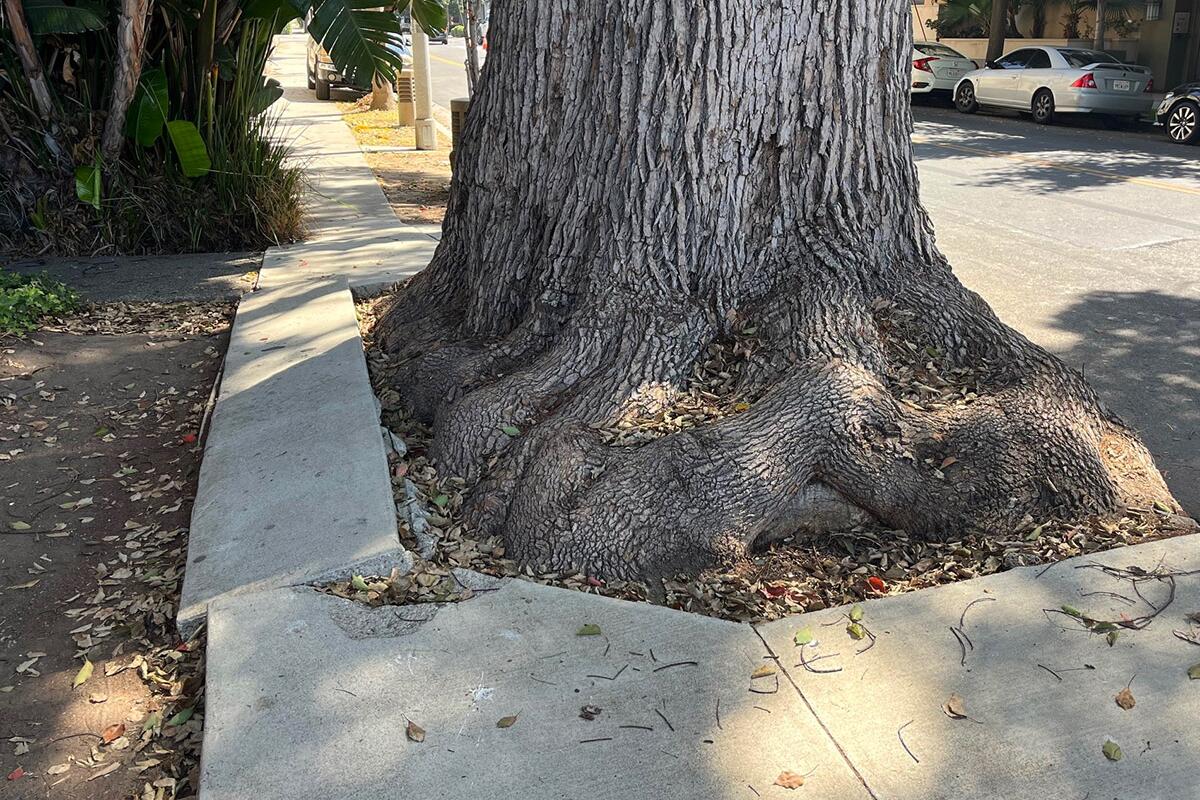
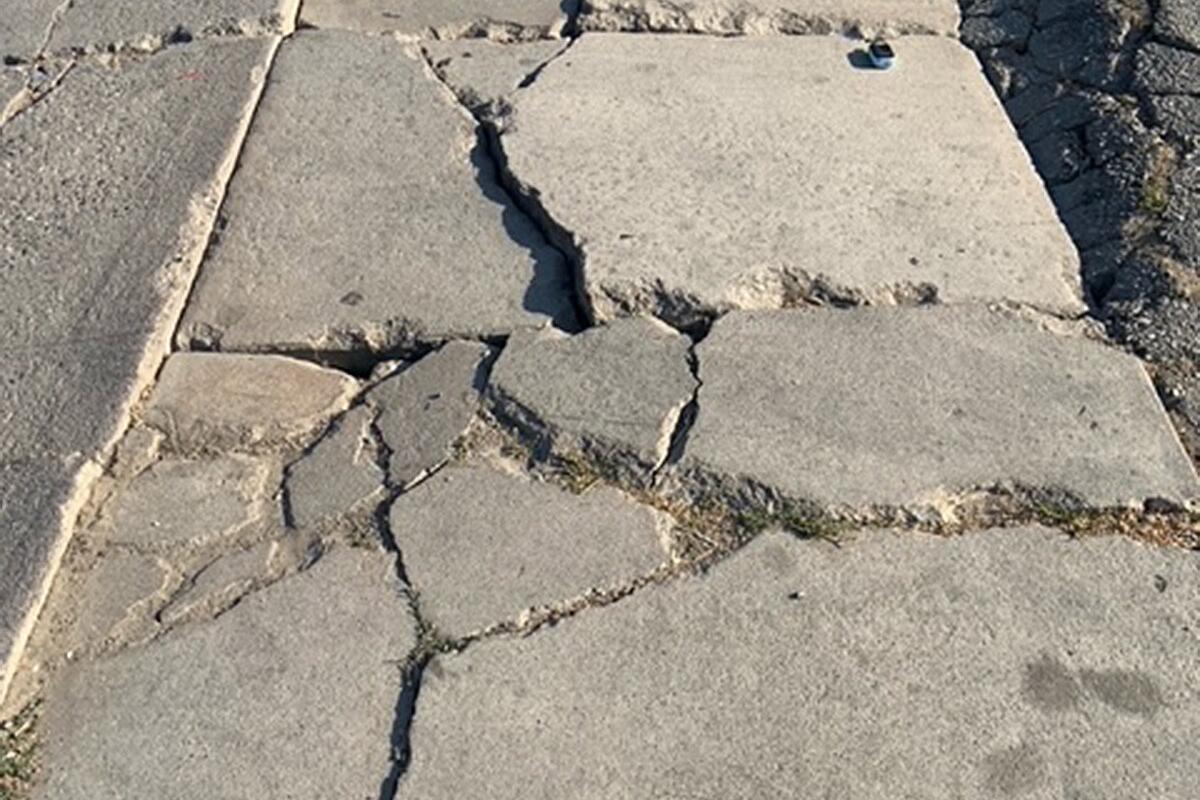
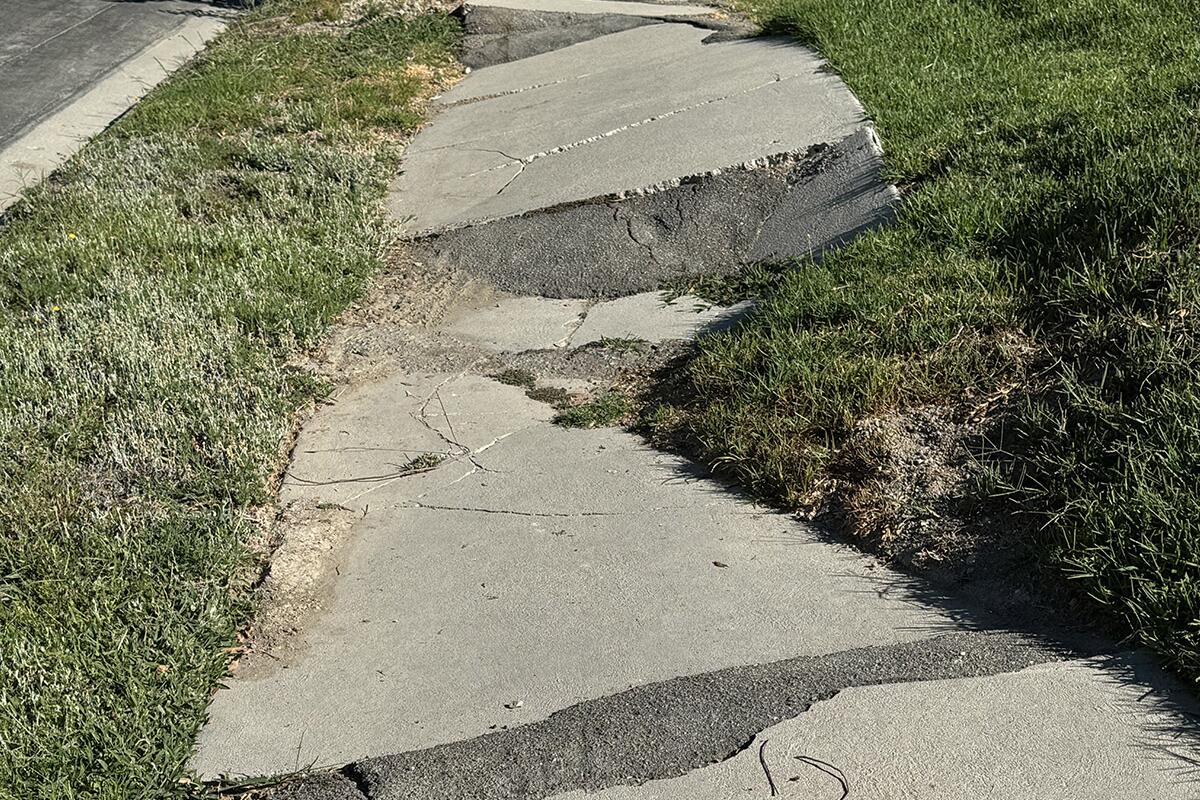
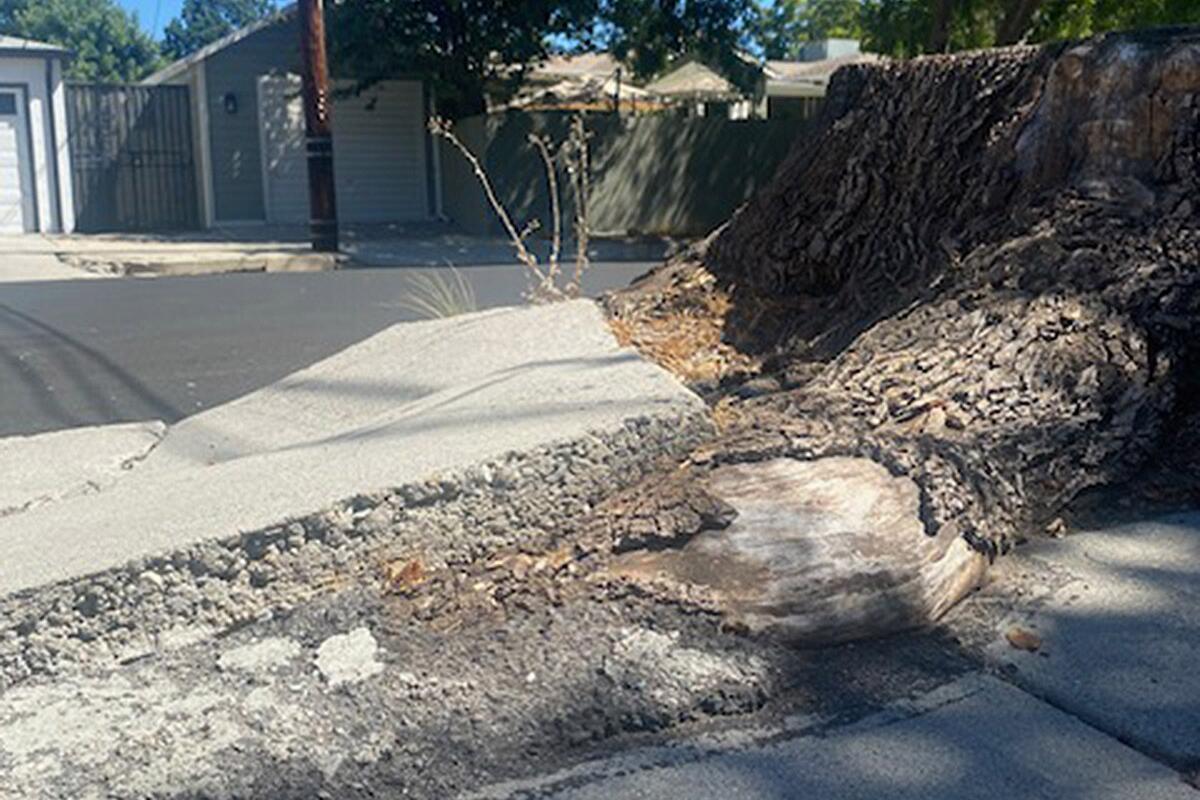
Top left: Joe Linton shared this image of a sidewalk that has given way to the tree in West LA on Ohio Avenue. Top right: Michael Peraza shared this image of a crumpled sidewalk in the 600 block of N. Gower Street in Los Angeles. Bottom left: David Moles shared this image of a sidewalk lifted up by an embankment in the 5700 block of Valerie Avenue in Woodland Hills. Bottom right: Babette Wilk shares this image of a tree in Valley Village, cut down years ago by the city, that still seems to have some life left in it.
Venice resident Thahn Tran learned this in June. She has a disabled tenant and was able to get in line to have her cracked sidewalk repaired. But her request wasn’t considered a top-priority job, as she learned through an email from the city’s Safe Sidewalks LA program.
And I quote:
“The Council adopted the Sidewalk Repair Program Prioritization and Scoring System, which helps the Program prioritize the overwhelming number of access requests. We currently have over 3,500 pending access requests.”
For clarity, that backlog of requests is separate from the 50,000 service requests that do not have access prioritization disabled, as noted in a 2021 audit.
But wait, I haven't gotten to the best part of the email yet.
“Your access request has a priority score of 30, out of a maximum score of 45. You are located in a residential area (15 points) and within 500 feet of a bus or transit stop (15 points). However, you have not been in the queue for more than 120 days.”
Here, now, is the soul crusher:
“Currently, the estimated waiting time to complete an access request with a score of 30 is more than 10 years.”
Too much. They don't even guarantee that a repair team will arrive in 2034.
“It’s ridiculous. Come on, why do we pay taxes?” asked Tran, an aerospace engineer. “In ten years I’ll be dead.”
But Angelenos are, to say the least, inventive.
In their Cheviot Hills neighborhood, Ken and Julie Uslan tell me they have “resorted to walking on the street, where they feel safer than on our sidewalks.” They, too, were surprised to learn that it could be ten years before the city takes the necessary action.
My advice? Don't be surprised if it only takes you 10 years. Be grateful.
As for the DIY repayment option I mentioned earlier, would you be surprised to learn that it is not a model of efficiency?
The deal is that you hire a private contractor to do the repairs and the city will cover a portion of the cost, up to about $12,000. The first problem here is that many people with broken sidewalks can’t afford to have them fixed, even with financial help. And the 2021 audit by then-City Comptroller Ron Galperin found a “long and complex” reimbursement process, naturally, where it could take nearly a year to get that reimbursement check.
“The city is making it very difficult for property owners to fix their own sidewalks,” said Alonso Romero, a Sherman Oaks contractor whose Safer Sidewalks website details city programs and repair options.
Romero said about 80% of his rebate clients back out when city inspectors require them to repair more than just the worst parts of their sidewalks, often turning a $5,000 to $10,000 repair into a $20,000 or more job.
“It’s driving me crazy,” Romero said.
I think that's the plan, to the extent there is a plan.
I would like to thank the dozens of readers who have sent me wonderful photographs of their destroyed sidewalks.
I had thought of the donkey thing as a joke, but now I think it's not such a bad idea.

